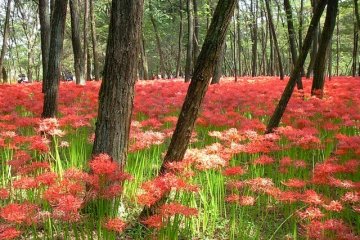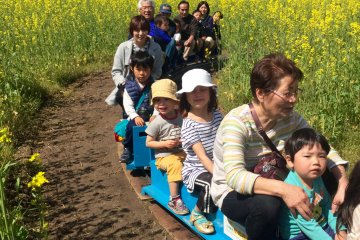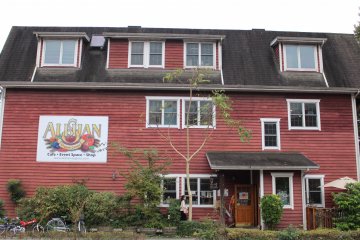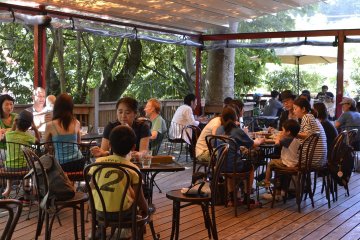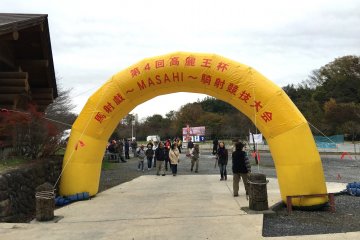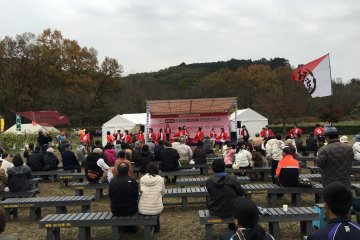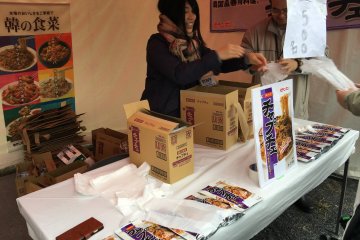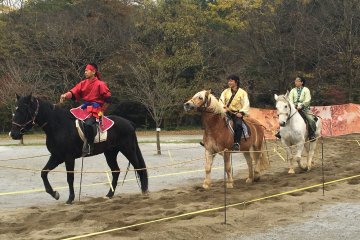To mark the 1,300th anniversary of history and cultural ties between ancient Korea and Japan, an annual traditional Korean mounted archery contest is held in Koma village, near Hidaka City in Saitama Prefecture.
Brief History of Koma
From 37 B.C. to 668 A.D., there was a large kingdom called Koguryo (or Goguryeo) in the northern part of Korea. Unfortunately, Koguryo was defeated by a Silla-Tang (ancient part of China and southern part of Korea) military alliance and many refugees fled to Japan. They were relocated by the Japanese ruler of that time to Koma county and appointed Jakko, a Koguryo imperial family member, to become the leader. Together with 1,799 fellow immigrants, they developed wilderness into agricultural land and built infrastructure such as roads. When Jakko died, he was buried at Shoden-in Temple and was enshrined as a god at Koma Shrine. Many Koreans and descendants still visit the shrine.
About The Event
As Koma approaches their grand 1,300th anniversary next year in 2016, the local community is coming up with more programs such as this traditional Korean mounted archery contest. It used to be held at Koma Shrine but they moved to Kinchakuda this year as the area is much bigger.
The event is held every year for 2-3 days over one of the weekends at the end of November, with the first day being the opening day filled with stage performances and a brief demonstration. The second or third day is when the actual contest starts and it is split in a morning and an afternoon session with contestants from Japan and Korea. The rule is to complete a 200m track within 20 seconds and shoot down 5 targets along the way. The target, which is a wooden board with a tiger drawing, will decrease in size as the level of difficulty during the contest increases.
Besides stage performances all day, there are plenty of food stalls selling both Korean and Japanese food, as well as some stalls doing PR for tours to Korea.
Getting there from Tokyo
Take the Seibu Line from Ikebukuro to Koma Station (approx. 1 hr) and then walk to Kinchakuda for about 15minutes.
Other attractions
- Kinchakuda This is the place where the festival is held and it is actually an agricultural plot of land and has a park filled with stunning red spider lilies from mid-September to mid-October. Entry is free.
- Alishan Organic and Vegetarian Cafe If you are hungry, you can stop by at this cafe for a very healthy and delicious meal before continuing. The cafe has staff who speaks English or Chinese and is pet-friendly too!
- Koma Komajinja (or Koma Shrine) It is walkable from Kinchakuda (about 25 minutes). The main temple has renovated recently, in preparation for the 1,300th anniversary.
- Shodenin (or Shoden-in Temple) This is just 1km away from the shrine and is walkable from Kinchakuda too. This is a temple and cemetery for Koreans who died during WWII, and Jakko, the leader of the Korean immigrants back then. The front gate preservs part of the 1,300 year old structure and the whole vicinity is bigger than at Koma Shrine. It costs ¥300 to enter.
- Mt. Hiwada If you have a lot of time, you can take a day hike up to Mt. Hiwada for a great view of the city.
- Soy Sauce Kingdom If you don't have a lot of time, you can either take a bus (that runs once per hour), a cab or drive down to Soy Sauce Kingdom, which is a small museum that showcases how soy sauce is made. There is also a shop selling soy sauce products and a restaurant that serves food using soy sauce. They also sell their famous local soy sauce ice-cream, which was really good and tasted like salted caramel.



